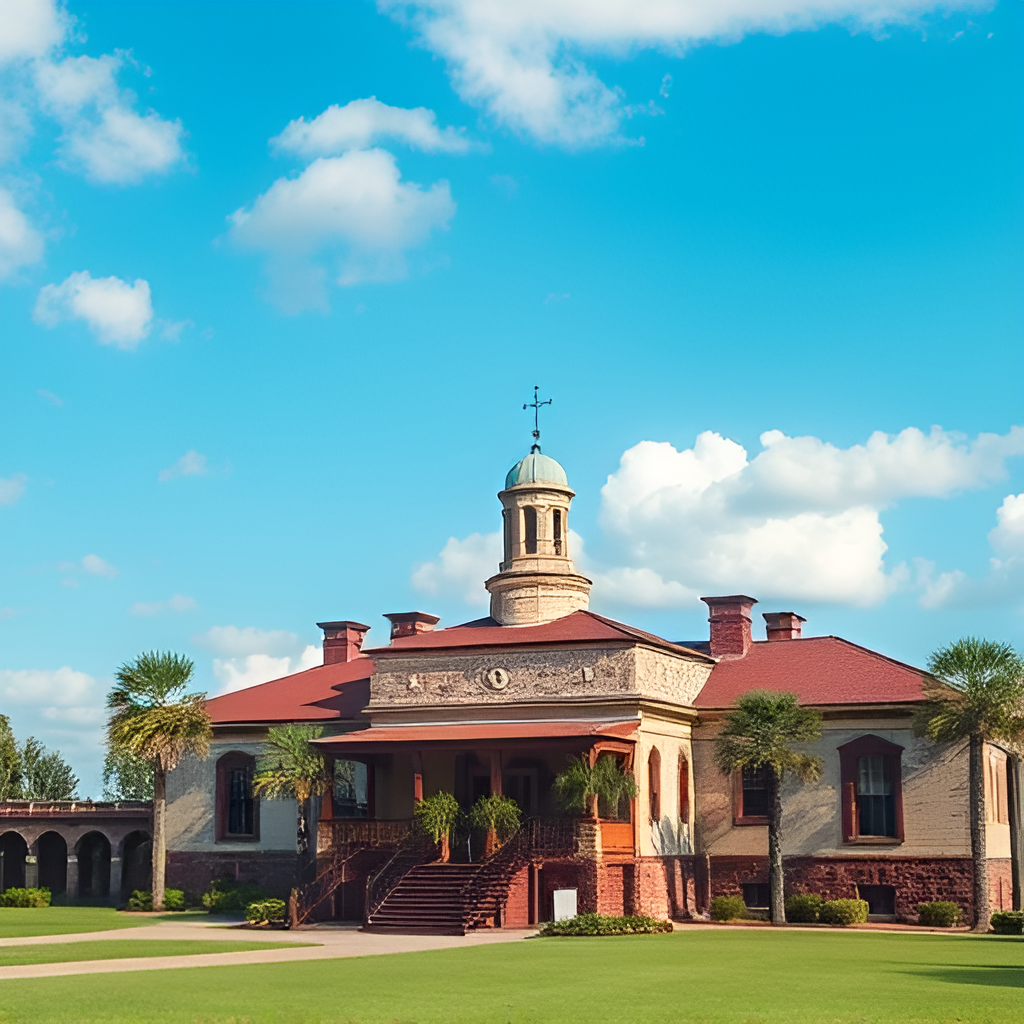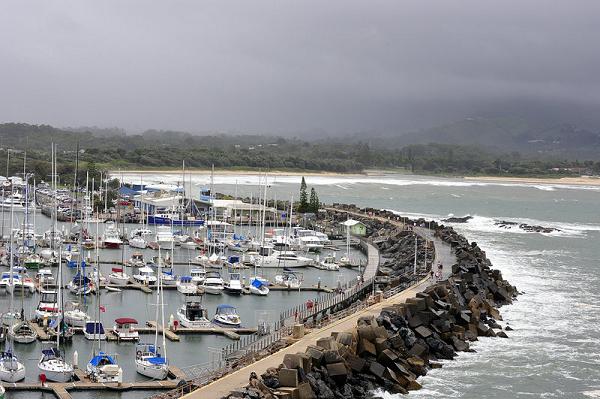For anyone who wants to deeply discover what Florida has to offer besides its usual sunny beaches and theme parks, a guide is really helpful; there are amazing old places all over the state that demonstrate its special and different past. From big wooden homes and very tall buildings by the ocean to old stone forts and places important to Native American history, you’ll discover it all.
If you’re into history or just want to learn more regarding Florida, this is the spot to understand the details on some major historical spots. From stories regarding people who were noticeably focused on exploring to those first people who settled down, and even the major shifts in how things were done culturally, a lot of places have some stories to share.
Why Florida’s Historic Landmarks are Worth Exploring
Florida has a very long history, going all the way back to the time when Native American tribes called it home, before the Spanish explorers showed up in the 16th century and started setting up their colonies. Throughout its history, the state has gone through a large amount of ups and downs—such as major economic booms and tough times—and each of these periods has left its own mark on the location. By looking at these historic spots, visitors get the chance to travel back to the past and see for themselves the places that have shaped not only Florida but American history too.
Castillo de San Marcos (St. Augustine)
The Castillo de San Marcos, in St. Augustine, is one of Florida’s most famous and best-kept historical sites. St. Augustine is the oldest city in the U.S. that has been lived in since Europeans first settled there; the Spanish built a massive fort in the late 1600s to protect the city from pirates and other countries trying to attack. With its tall walls made of coquina—a type of limestone—and its position by the Matanzas River, the fort stands as a strong symbol of the time when colonists first came to America.
Fort Matanzas National Monument (St. Augustine)
They built a small but vitally important fort just south of the Castillo in 1742 to keep the southern entrance to St. Augustine safe from others. It played a crucial role in safeguarding the city. Now, if you want to consider this, you can catch a ferry across the Matanzas River. When you’re there, you see these incredible sights of the nearby swamps and the Atlantic Ocean.
Ernest Hemingway Home and Museum (Key West)
If you’re into books, you must look at the Ernest Hemingway Home and Museum in Key West. It’s a marvelous Spanish colonial mansion where the famous novelist Ernest Hemingway dwelt in the 1930s and wrote a lot of his well-known books. The museum is really great because you get to look into Hemingway’s life, such as where he used to write and the nice gardens he had, which are still stomping grounds for some famous six-toed cats.
Visit in the morning to avoid the afternoon crowds and enjoy a tranquil walk through the grounds.
The Vizcaya Museum and Gardens (Miami)
Vizcaya Museum and Gardens, located right in Miami, demonstrates amazing European-style architecture and gardens that look very beautiful. Originally made in the early 1900s for James Deering, a businessperson who needed a winter home, it shows how unique and special the Gilded Age was, with its big and bright architecture, nice gardens, and amazing views of Biscayne Bay. Now, it’s turned into a museum where people can go explore the very big mansion’s inside and the expansive gardens outside.
The Ancient Spanish Monastery (North Miami Beach)
In Florida, there’s the ancient Spanish monastery. It was first built there in 1141 in Spain—but then they took it apart and brought it over to the United States. They put it back together piece by piece right by North Miami Beach sometime in the early 1900s. Now, it’s not only an old building; it’s a quiet spot where people go to relax and reflect. It’s surrounded by beautiful courtyards and gardens, making it a perfect break from the busy city life.
The monastery claims to be the oldest building in the Western Hemisphere.
Fort Zachary Taylor Historic State Park (Key West)
At the bottom part of Key West, there’s Fort Zachary Taylor. It was vitally important during the Civil War and the Spanish-American War; they built it there in the mid-1800s because they needed it to help protect the coast. Now, it’s a wonderful spot where people go to look at an old fort that’s still in first-rate shape, enjoy themselves at some beautiful sandy places by the water, and they can even see guns from the Civil War.
Ponce de Leon Inlet Lighthouse (Ponce Inlet)
Standing at 175 feet, the Ponce de Leon Inlet Lighthouse is the tallest in Florida, and it’s extremely well-kept compared to others; this red brick lighthouse was put up in 1887, and you can find it a little south of Daytona Beach. When you’re at the top, you can see everything from the Atlantic Ocean and Halifax River to places nearby; there’s also a museum, part of the lighthouse, where you can look at material regarding how life was for the keepers, many different topics regarding lighthouses, and Florida’s history on the sea.
Climb the 203 steps to the top of the lighthouse for stunning views of the coastline.
De Soto National Memorial (Bradenton)
In Florida, there is De Soto National Memorial that is focused on celebrating when the Spanish explorer, Hernando De Soto, and his group landed there in 1539. It was of strikingly significant consequence because it began the entire European adventure and taking over parts of what’s now the southeastern US; they have a building where you can learn about De Soto’s trip, and they also have walking paths and live reenactments so you can see what happened yourself.
Edison and Ford Winter Estates (Fort Myers)
Henry Ford and Thomas Edison were both brilliant inventors from America, and they had winter homes right next to each other in Fort Myers. Now, there’s the Edison and Ford Winter Estates that’s kept just like it was at that time, so people can see how these amazing inventors lived. When you go there, you get to look at Edison’s strikingly large botanical gardens and the location where he did all his experiments. In addition, you can see Ford’s very good home. It’s a marvelous spot where you can noticeably focus on how Edison worked with plants and how Ford was very interested in building cars.
Schedule your visit over the Christmas season to see the estates dressed out in festive lights and decorations.
Fort Jefferson (Dry Tortugas National Park)
Fort Jefferson, located in the isolated Dry Tortugas National Park, is one of the largest masonry forts in the United States. Built in the mid-1800s, the fort operated as a military outpost and a prison during the Civil War. Today, tourists may explore the gigantic structure, snorkel in the beautiful seas around it, and discover abundant aquatic life. The fort’s remoteness and gorgeous natural environs make it one of Florida’s most remarkable historical monuments.
Book a seaplane or ferry voyage to reach this distant spot and spend a full day of sightseeing.
The Ringling Museum and Ca’ d’Zan (Sarasota)
The Ringling Museum of Art and Ca’ d’Zan Mansion in Sarasota were originally the residence of circus entrepreneur John Ringling and his wife, Mable. The museum includes a rich collection of art, while the Ca’ d’Zan is a remarkable example of Venetian Gothic architecture. With its sumptuous style and breathtaking views of Sarasota Bay, the home is a tribute to the wealth and prominence of the Ringling family during the height of the American circus era.
The Gamble Plantation Historic State Park (Ellenton)
The Gamble Plantation, located in Ellenton, is the sole remaining antebellum plantation house in South Florida. Built in the mid-19th century, the estate was formerly a huge sugarcane farm and later served as a shelter for Confederate Secretary of State Judah P. Benjamin after the Civil War. Visitors can visit the mansion and learn about the plantation’s history and its importance in Florida’s agricultural past.
Coral Castle (Homestead)
Ed Leedskalnin, an individual from Latvia, made something spectacular called Coral Castle in the early 20th century. It’s a large building made just from limestone; the weirdest thing is that he did it all by himself, no help from large machines or anything; today, people who go see it are very surprised by how detailed the carvings are and how he managed to move these strikingly large rocks around. No one knows how he built it or where he got his ideas, making it even more puzzling.
Leedskalnin dedicated the castle to his lost sweetheart, Agnes, whom he referred to as his “sweet sixteen.”
The Freedom Tower (Miami)
The Freedom Tower is a very well-known building in the middle of Miami, Florida. People see it as a major event because it’s primarily focused on Cuban people coming to the US for a better life. In the ’60s, it was where Cuban immigrants got all their forms finished when they were running from Castro’s government. Now, it’s not just a major old building—it’s a symbol of hope and freedom for Cuban-Americans. In addition, it has a museum inside that tells the entire story of how Cubans made their way to America.
Bok Tower Gardens (Lake Wales)
Edward W. Bok, who was talented with words and won a Pulitzer Prize, had an important idea. Mr. Bok dreamed up Bok Tower Gardens because he wanted a location that was peaceful and full of history. In 1929, they built a strikingly large 205-foot tower called the Singing Tower. It looks very unique with its Art Deco and Neo-Gothic style, sitting right at the center; the gardens around the tower are very tidy, with pathways that twist and turn, little ponds, and plants that are originally from here. It’s a wonderful place to relax and feel closer to nature.
FAQs
What is the oldest historic landmark in Florida?
Castillo de San Marcos in St. Augustine, erected in 1672, is the oldest masonry fort in the continental U.S. and a major landmark in Florida’s history.
Can you visit the Dry Tortugas National Park year-round?
Yes, the park is open year-round, though it’s important to check for weather conditions and book your ferry or plane in advance.
What is the importance of the Freedom Tower in Miami?
The Freedom Tower operated as a Cuban refugee processing center in the 1960s and is a symbol of freedom and optimism for Cuban Americans.
Are there any historic plantations in Florida?
Yes, Gamble Plantation near Ellenton is a preserved antebellum plantation that offers tours of its grounds and mansion.
What is Coral Castle, and why is it famous?
Coral Castle is a limestone edifice made by Ed Leedskalnin, who strangely built the complex without modern machinery, making it an enduring architectural mystery.


